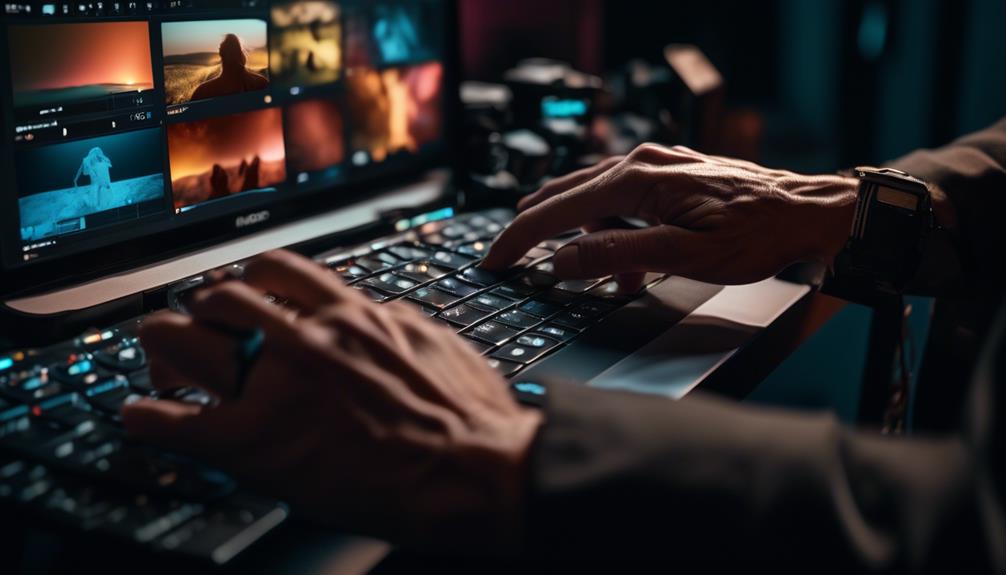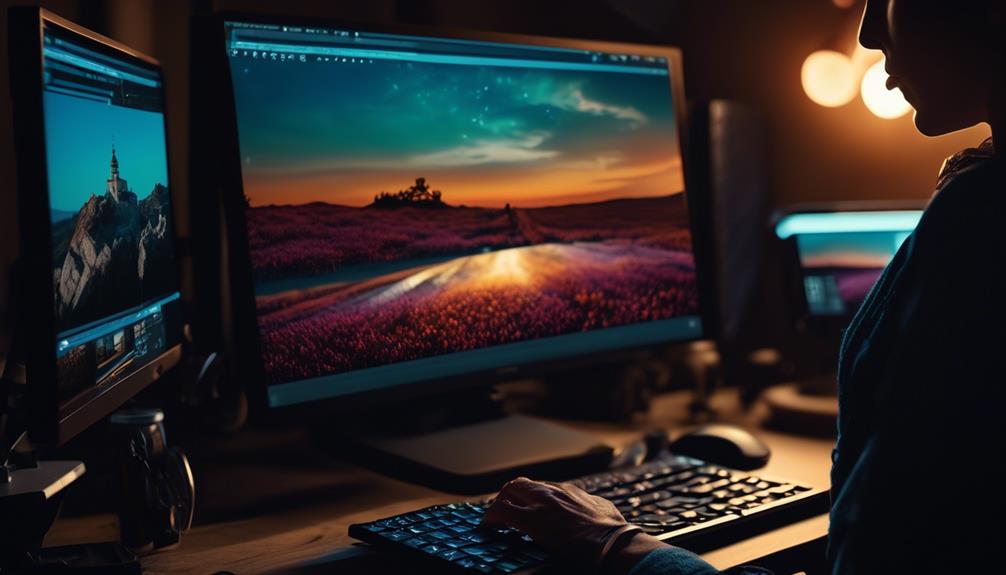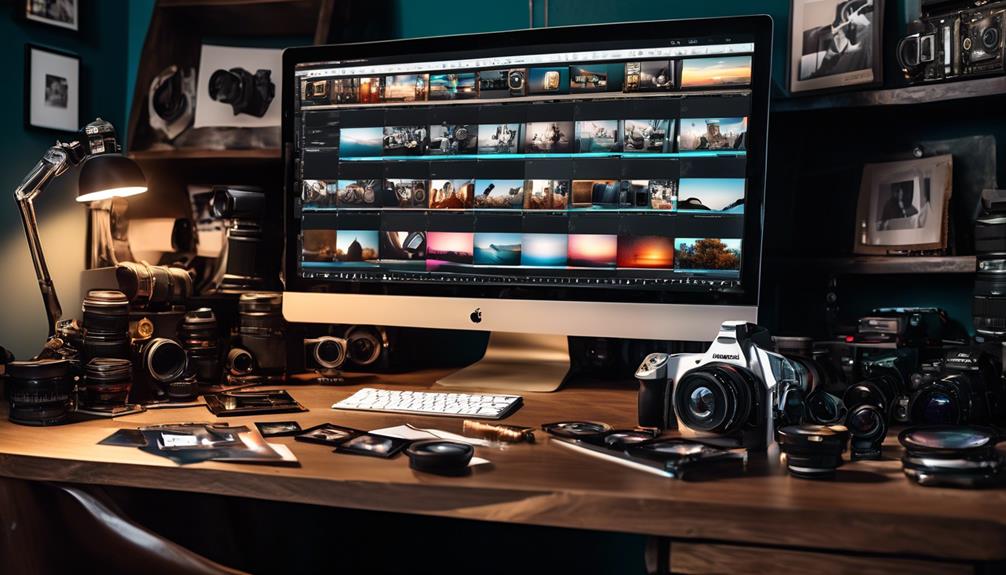Please note this post may contain affiliate links picked by me (Jay) that I have deemed may be of interest or relevant to you the reader of this.
These links do not affect the cost of the thing if you decide to purchase but i may get a little money if you choose to purchase.
For more information on my affiliate link policy click here.
They say that practice makes perfect, and when it comes to photo editing skills for photographers, this adage couldn't be more true. As someone who has dabbled in the world of photography and post-processing, I've learned that there are several key factors that can greatly enhance your editing abilities.
From understanding the basics of post-processing to exploring advanced editing techniques, there is always something new to learn in the ever-evolving world of photo editing. But what truly sets apart the great editors from the rest is their ability to develop a consistent editing workflow and learn from the expertise of others.
So, if you're looking to take your photo editing skills to the next level, join me as we dive into the world of enhancing images through the art of post-processing.
Key Takeaways
- Avoid over-editing photos to maintain authenticity
- Experiment with different editing styles to unleash creativity
- Incorporate advanced retouching and effects into the editing workflow
- Seek feedback from peers and mentors for valuable insights
Understanding the Basics of Post-Processing
Understanding the basics of post-processing is essential for photographers looking to enhance their photos and take their editing skills to the next level. As an avid photographer myself, I know how important it's to avoid common editing mistakes and utilize the power of color grading to create stunning and innovative images.
One of the most common editing mistakes photographers make is over-editing their photos. It can be tempting to apply excessive filters, adjustments, and effects, but this often results in unnatural and unappealing images. Instead, it's crucial to maintain a balance and let the photo's essence shine through. By understanding the basics of post-processing, you can enhance your photos without going overboard and losing the authenticity.
Color grading plays a significant role in post-processing and can completely transform the mood and atmosphere of your photos. It involves adjusting the colors and tones to create a specific look or evoke a particular emotion. Whether you want to add warmth to a sunset photograph or create a moody black and white image, mastering color grading techniques is key. Experiment with different color palettes, contrasts, and saturation levels to achieve the desired effect.
Innovation is at the heart of photography, and post-processing allows you to push the boundaries of creativity. By understanding the basics of post-processing, you gain the tools to unleash your imagination and bring your vision to life. Don't be afraid to experiment, try new techniques, and explore different editing styles. Embrace the power of post-processing to elevate your photos and captivate your audience with your unique artistic flair.
Utilizing Advanced Editing Techniques
To take your photo editing skills to the next level, it's time to delve into the realm of utilizing advanced editing techniques. These techniques not only allow you to enhance your images but also give you the freedom to unleash your creativity and add that wow factor to your photos.
One of the advanced retouching techniques that you can explore is frequency separation. This technique separates the texture and color information of an image, enabling you to retouch imperfections while preserving the overall texture. It's a powerful tool for achieving flawless skin in portrait photography.
Another technique that can elevate your editing game is the use of creative effects. With creative effects, you can transform your photos into stunning works of art. From adding dramatic vignettes to experimenting with color grading, the possibilities are endless.
By incorporating advanced retouching and creative effects into your editing workflow, you can create visually striking images that captivate and inspire. Remember, the key to mastering advanced editing techniques is practice and experimentation. Don't be afraid to push the boundaries and try new things.
Innovation comes from stepping outside of your comfort zone and exploring the endless possibilities that photo editing offers. So, grab your camera, capture those amazing moments, and let your imagination run wild as you bring them to life with advanced editing techniques.
Exploring Different Editing Software Options
When it comes to exploring different editing software options, there are a plethora of choices available that can take your photo editing skills to new heights. Whether you're a beginner or a seasoned professional, finding the right editing software can make a world of difference in the quality of your final images.
Here are some key aspects to consider when comparing editing software features:
- User Interface: A clean and intuitive interface can greatly enhance your editing experience. Look for software that offers a user-friendly interface with easy-to-navigate menus and tools.
- Editing Tools: Different software will offer a variety of editing tools, so it's important to consider your specific needs. Are you looking for advanced retouching capabilities or a wide range of filters and effects? Make sure the software you choose has the tools necessary to achieve your desired results.
- Export Options: The ability to export your edited images in various formats is essential for sharing and printing. Look for software that provides a range of export options, including popular file formats like JPEG and TIFF.
In addition to traditional editing software, exploring mobile editing apps can also be a game-changer for photographers on the go. These apps offer the convenience of editing your photos directly on your smartphone or tablet, allowing you to make quick adjustments and enhancements wherever you are.
Mobile editing apps often come with a wide range of filters, effects, and adjustment tools, allowing you to create stunning images right from your mobile device. They also offer easy sharing options, so you can instantly showcase your edited photos on social media platforms or send them to clients.
Developing a Consistent Editing Workflow
Now that we've explored different editing software options, let's dive into the world of developing a consistent editing workflow to streamline your photo editing process and ensure consistent and professional results.
A well-defined editing workflow not only saves time but also helps maintain color accuracy and balance exposure levels, resulting in stunning photographs.
To begin, it's essential to start your editing process with a solid foundation. This involves properly calibrating your monitor to ensure accurate color representation. By maintaining color accuracy, you can be confident that the colors in your photos will appear as intended, whether they're vibrant landscapes or subtle portraits.
Next, focus on balancing exposure levels. Achieving the right exposure is crucial to bring out the details and highlights in your images. Start by adjusting the exposure slider to ensure that your photo is neither too bright nor too dark. Then, fine-tune the highlights and shadows to bring out the desired level of detail. Remember, a well-balanced exposure can make a significant difference in the overall impact of your photograph.
As you progress through your editing workflow, consistency is key. Develop a step-by-step process that works for you and follow it consistently. This will help you develop your unique editing style while maintaining a cohesive look across your portfolio. Additionally, consider creating presets or using batch processing to apply similar edits to multiple photos, further streamlining your workflow.
Learning From Expert Photographers and Editors
Learning from expert photographers and editors can greatly enhance your photo editing skills and take your work to the next level. When it comes to improving your editing abilities, there's no better way than seeking feedback from peers and mentors. These individuals can provide valuable insights and constructive criticism that will help you identify areas for improvement and refine your techniques.
Additionally, experimenting with different editing styles and techniques is crucial for growth as an editor. By exploring new approaches, you can push the boundaries of your creativity and discover unique ways to enhance your photos.
Here are three reasons why learning from expert photographers and editors is essential for improving your photo editing skills:
- Valuable Feedback: Peers and mentors can offer a fresh perspective on your work, pointing out both strengths and weaknesses that you may have overlooked. Their feedback can help you identify areas where you excel and areas that need improvement, allowing you to grow and evolve as an editor.
- New Perspectives: Expert photographers and editors often have a wealth of knowledge and experience that can inspire you to think differently about your editing process. By learning from their techniques and approaches, you can broaden your horizons and develop a unique editing style that sets you apart from the rest.
- Continuous Learning: The field of photography and editing is constantly evolving, with new trends and techniques emerging all the time. Engaging with experts in the industry allows you to stay up to date with the latest developments and incorporate innovative editing methods into your workflow.
Frequently Asked Questions
What Are Some Common Mistakes to Avoid When Editing Photos?
When it comes to editing photos, there are some common mistakes that photographers make. One of the most common misconceptions is over-editing. It's easy to get carried away with adjustments and end up with an unnatural-looking image.
Another mistake isn't paying attention to details, such as color balance or sharpness. It's important to take the time to fine-tune these elements to enhance the overall quality of the photo.
How Can I Effectively Organize My Photo Editing Workflow?
To effectively organize my photo editing workflow, I focus on efficient organization and time management.
I make sure to create a system for naming and categorizing my files, allowing me to easily locate and access them.
I also prioritize tasks and set realistic deadlines, ensuring I stay on track and complete projects in a timely manner.
Are There Any Lesser-Known Editing Software Options That Are Worth Trying?
There's a whole world of editing software out there that often goes unnoticed. These underrated gems can truly enhance your photo editing skills.
From lesser-known editing software alternatives to undiscovered editing techniques, exploring these options can open up new creative possibilities.
It's like finding a hidden treasure chest full of innovative tools just waiting to be unlocked.
What Are Some Important Factors to Consider When Choosing the Right Editing Software?
When it comes to improving my photo editing skills, there are a few factors I always consider when choosing the right software.
First, ease of use is crucial. I want a program that allows me to navigate effortlessly and quickly edit my photos.
Second, versatility is key. The software should offer a wide range of editing tools and effects to help me unleash my creativity.
Lastly, regular updates and support are important to ensure I stay up-to-date with the latest innovations in photo editing.
How Do I Effectively Communicate My Editing Style to Clients or Viewers?
Effective communication is key when it comes to showcasing my editing style to clients or viewers. By clearly communicating my vision and expectations, I can ensure that they understand my creative choices and objectives.
This can be achieved through various means, such as visual examples, mood boards, or detailed explanations. By setting clear expectations and effectively communicating my editing style, I can create a stronger connection with my audience and deliver the innovative and compelling work they desire.
Conclusion
In conclusion, honing one's photo editing skills is a journey of continuous learning and experimentation. It's like sculpting a masterpiece from a block of stone, chiseling away to reveal the true beauty within.
By understanding the basics, utilizing advanced techniques, exploring different software options, and developing a consistent workflow, photographers can transform their images into captivating works of art.
And let's not forget the invaluable wisdom gained from expert photographers and editors, who serve as our guiding light along this creative path.
So let's dive in, embrace the endless possibilities, and watch our editing skills soar to new heights!


